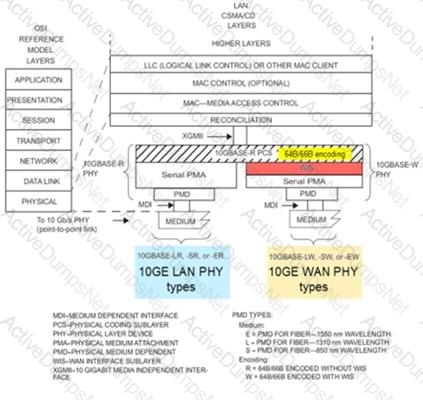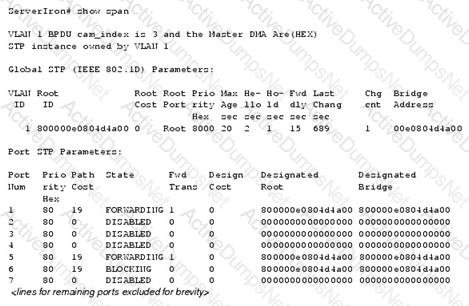Brocade 150-130 Brocade Certified Network Engineer 2012 Exam Practice Test
Brocade Certified Network Engineer 2012 Questions and Answers
Referring to the exhibit,
#show lag
Total number of LAGs: 1
Total number of deployed LAGs: 0
Total number of trunks created:0 (128 available)
LACP System Priority / ID: 1 / 0024.3891.4f00
LACP Long timeout: 90, default: 90
LACP Short timeout: 3, default: 3
=== LAG "30Gig_Trunk" ID 1 (dynamic Not Deployed) ===
LAG Configuration:
Ports: e 1/3 e 1/5 e 1/7
Port Count: 3
Primary Port: 1/3
Trunk Type: hash-based
LACP Key: 100

Which command must be entered to make the LAG function on a
Brocade NetIron MLXe?
In the exhibit, the network is running Spanning Tree 802.ID. Which port will be placed in a blocked state?

During the discovery process, to which registered multicast IP address does OSPF send a hello packet?
You have a mission-critical application on your network that you know by IP address. You want this traffic to be serviced before all other traffic on the network. Which two features should you implement to ensure that this mission-critical application traffic is identified and serviced correctly? (Choose two.)
Which three transceiver form factors are supported by Brocade switches and routers? (Choose three.)
Which three statements are true about RIPv2 and OSPF? (Choose three.)
An identical route has been discovered by OSPF and RIP. By default, the OSPF route is chosen and added to the routing table. What should be done to allow the RIP route to be preferred?
What are the three available QoS scheduling algorithms available on Brocade NetIron and FastIron products? (Choose three.)
You have been asked to implement a standards-based Layer 2 loop avoidance protocol with a typical convergence time of 3 seconds or less. Which Layer 2 loop avoidance protocol should you use?
Optical monitoring is not returning data. What are three reasons for this happening? (Choose three.)
Which two statements about ICL links in Brocade Multi-Chassis Trunk (MCT) implementations are true? (Choose two.)
You want to classify and mark traffic at the edge of your network before it is sent to the core and routed where Layer 3 QoS is trusted and enabled. Which type of marking should you configure to ensure your application traffic is serviced correctly in the core of your network?
Which two access control list (ACL) types will match on TCP/UDP ports? (Choose two.)
Which two destination addresses are used in an ARP request if the source station's IP address is:
192.168.5.12/16? (Choose two.)
In the exhibit,

Which port is responding to a change in the network topology?
When is an OSPF virtual link used?
